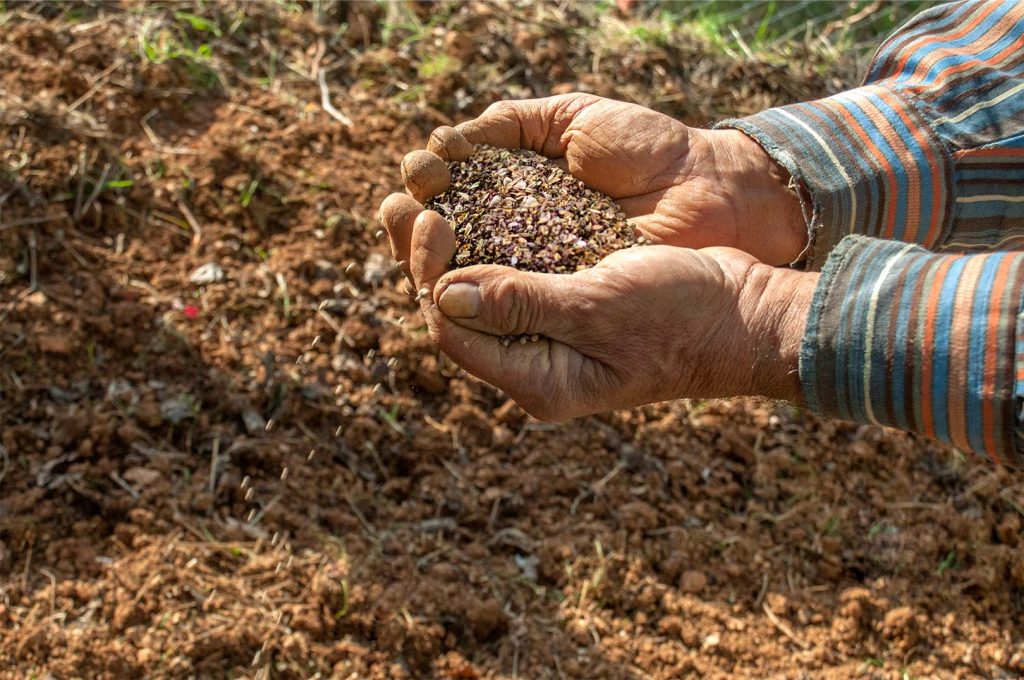
Seeding with a Pendulum Spreader Guide
Table of Contents
One method of broadcast that many farmers find helpful is the use of a pendulum seed spreader. Here at Hamilton Native Outpost, we have used the VICON (now Kubota) brand seed spreader and have been very happy with the results. We even have a few available to rent! A pendulum spreader is attached to the back of a tractor, connecting to the PTO using a three-point hitch. Seed goes into the hopper, and then is dispersed onto the ground by a pendulum arm that swings from side to side. This allows for a symmetric spread pattern for optimal overlap.
Will a pendulum spreader handle fluffy seeds?
Yes. Pendulum spreaders seem to be the only spreaders that we’ve found that handle fluffy seeds without a carrier. The seeder has an agitator at the bottom of the hopper. This helps to keep the fluffy seeds from collecting and bridging over the seed flow opening.
Do I need to use a carrier when using a pendulum spreader? (If so what kind of carrier?)
With most pendulum seed spreaders, a carrier is typically unnecessary. However, a carrier can be added to a seed mix to give it more bulk/volume. Occasionally, it can be advisable to use a carrier with the seed, such as in situations where there is a relatively small volume of seed being applied per acre.
If a carrier is desired to mix with the seed, opt for something that is free of weed seeds such as sawdust, pelletized lime, kitty litter or dried distillers’ grain (available at most local farm stores). If fertilizer is used as a carrier, please keep in mind that there are some fertilizers that are treated with chemical weed killers, which is a recipe for disaster. Also, avoid Nitrogen fertilizer as it promotes top growth of competitive weeds.
How do I calibrate a pendulum seed spreader?
The seeding rate can be adjusted with an adjustment arm that opens and closes the opening(s) at the bottom of the hopper and an adjustment knob located on the side of the spreader. The opening of the seed metering unit should be set to distribute the largest seed in the seed mixture.
For accurate calibration, it is best to contact the manufacturer directly or to reference their user manual. For a visual demonstration, watch our video: VICON Broadcast Seeder How-To.
Do I need to bury the seeds for successful germination?
No. The main goal is good seed to soil contact. The seeds do NOT need to be buried, but they DO need to be in contact with the soil. To drag while spreading, attach a logging chain to the draw bar of the tractor and pull a large cedar or blackjack oak behind the spreader. (Do not hook the chain to the seed spreader). If in doubt, you can always drag afterwards. Read more about dragging in our Dragging Guide. Also read the Seedbed Preparation: Guiding Principles guide to make sure you have a good seedbed.
Helpful Hints:
- If rented, the seed spreader could have seed or herbicide contamination from the previous use. Make sure to clean thoroughly before adding seed.
- Try to maintain even track spacing as you plant for even seed distribution. Keep in mind that seed does not fly as far as fertilizer or a carrier; usually it is ideal to drive close enough to the last set of tire tracks that it is difficult to tell which tracks belong to each other. For example, if your equipment tires are 5’ apart, make the next pass 5’ from the last set of tracks. Double seeding and cross hatching (applying half of the seed the first time and coming across the field a second time in a perpendicular direction) is also a helpful tool to ensure even spread. For example: If your first seeding run was in the direction of north and south, apply a second round going east/west.